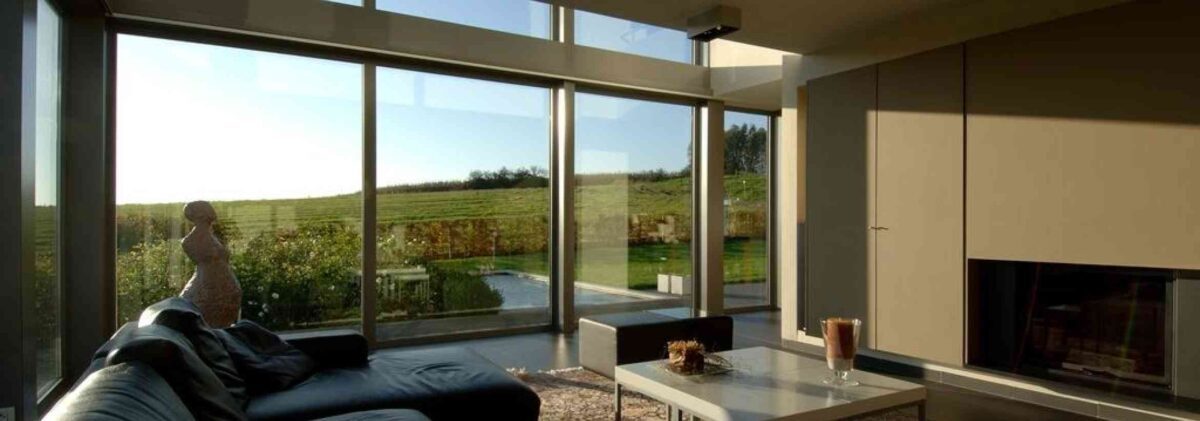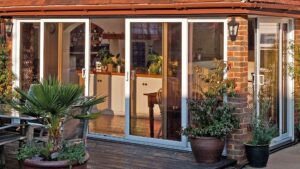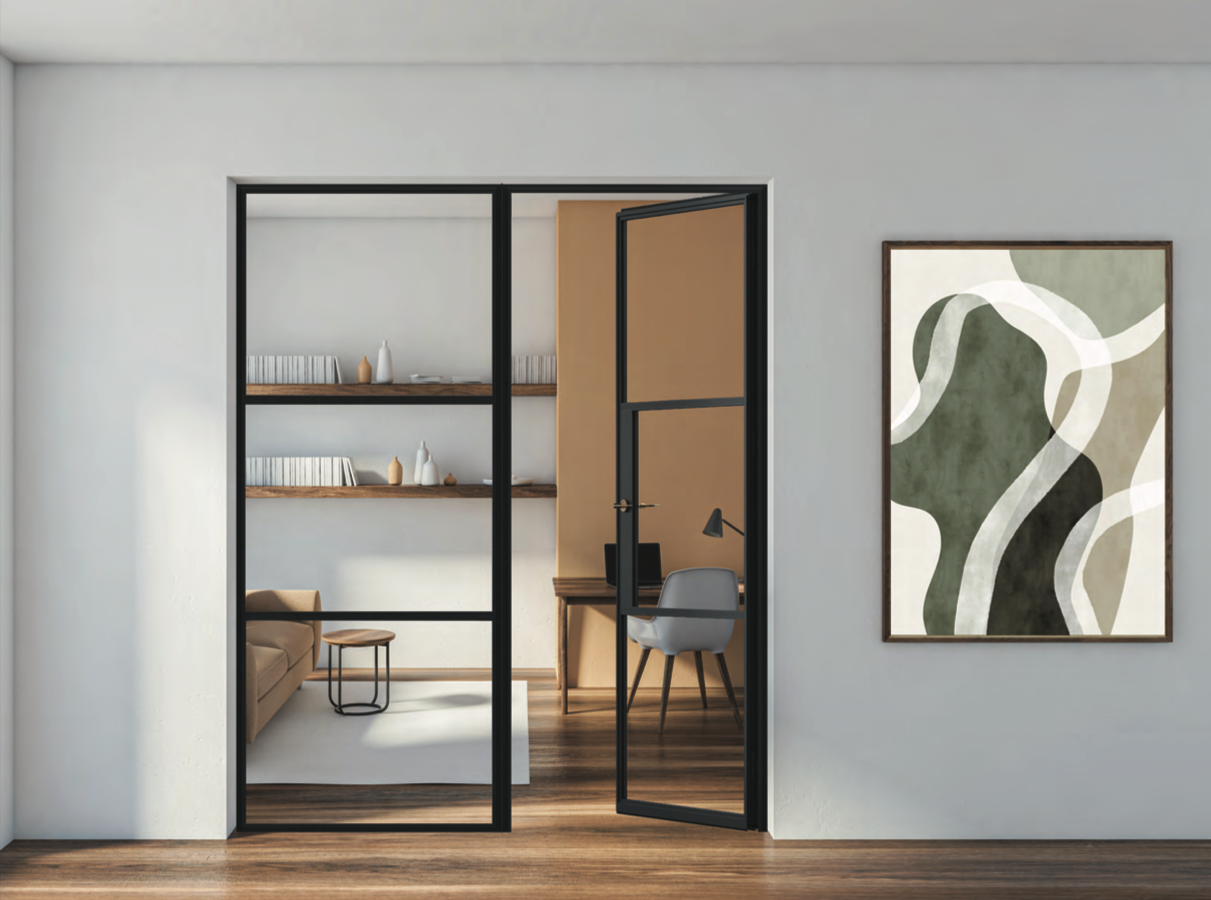According to The Energy Trust, as much as 26% of all the heat lost in the average home escapes through windows and other glazed areas. Some of this heat loss relates to poor insulation or damaged frames. But the kind of glazing you have can also have a significant effect on the amount of heat that escapes your home.
The higher the degree of heat loss, the more you will have to spend to ensure your home or office maintains a comfortable temperature.
There is also the concern about the emissions which poorly insulated windows give out.
Whether you are eco-conscious or feeling the pinch of high heating bills, you may want to consider installing energy-efficient windows such as Planitherm glass windows.
With over 25 years of experience producing and installing myriad types of glazing, the expert team here at Manchester Window Factory are ideally placed to advise you on the best glazing options to suit your needs.
In this blog, we will explain what Planitherm windows are, the pros and cons, and answer some of your most frequently asked questions. So, without further ado, let’s get started.
What are Planitherm windows?
Simply put, Planitherm glass windows are windows with a thermally insulating coating acting to retain heat and reduce emissions. This type of window is also called low-emissivity glass (low-E glass).
Although other types of energy-efficient windows are available, Planitherm windows are market leaders in energy-efficient glazing. Developed specifically for the UK climate, these high-performance windows and door glazing can be double or triple-glazed.
How is Planitherm glass made?
Similar to self-cleaning glass, Planitherm glass is made by applying a unique coating. Whereas the titanium oxide on self-cleaning glass windows is designed to repel oil and water, the coating on Planitherm glass controls the heat.
The neutral thermal coating which gives Planitherm glass its name allows some of the heat from the sun to penetrate the glass while blocking harmful UV rays. Planitherm glass also reduces draughts, a huge help in keeping your home comfortable in the winter months.
This process not only helps to keep the heat in your rooms where it belongs but reduces the harmful emissions that are contributing to the climate crisis. The Glass and Glazing Federation and The Energy Trust estimate that the average three-bedroom house could save around 22% on their heating bills.
Hermetically sealed to the glass, the Planitherm coating is guaranteed to last the lifespan of the window. That means you will never need to repair or replace the coating until it’s time for new windows.
Different types of Planitherm windows
Several types of Planitherm glass windows are available, including safety glass, acoustic glass, self-cleaning glass and solar-controlled glass.
However, there are three primary ranges of Planitherm glass – Energy Standard, Comfort, and Comfort Plus, all of which can be used with double or triple-glazed windows.
Planitherm Energy Standard
The most basic option is the Planitherm Energy Standard double-glazed window. This unit features the unique Planitherm thermal coating on the inner pane, combined with argon-filled gaps and warm edge spacer bars to create an energy A-rated window. Planitherm Energy Standard reduces heat loss by around 56% compared to an uncoated double-glazed window.
Planitherm Comfort
If noise pollution or security is a concern, you should consider the Planitherm Comfort unit. These clever windows have an extra transparent layer built in, reducing noise transmission by approximately 20% compared to standard double-glazing. The extra layer of 6.8mm STAPID SILENCE laminated glass on the exterior pane also increases privacy and security.
Planitherm Comfort Plus
Last but by no means least, we have Planitherm Comfort Plus. A 16mm window, it features a 90% argon-filled space with a centre-pane u-value of 1.0w/m2k. The best option for customers with large glazed areas, particularly if they are south-facing, these windows combine all of the energy efficiency, noise reduction and privacy and security benefits of its sister products. The low-E glass retains 63% more internal heat while blocking 50% of the sun’s harmful UV rays, reducing emissions and creating a pleasant internal temperature all year around.
Can Planitherm glass be fitted across any window frame?
Yes. Not only is Planitherm glass suitable for windows, doors, and even conservatories but it can also be used with a UPVC, timber or aluminium frame of any size.
Do I need planning permission to install Planitherm windows?
Usually, window installation or replacement is covered by building regulations. However, if you live in a conservation area or you live in a listed building, you may need planning permission. If you have an article 4 direction on your property, you will not be able to make any changes.
Pros and Cons of Planitherm glass windows
There are many benefits to installing Planitherm glass windows in your home or commercial premises.
Pros
- Highly energy efficient
- Reduces carbon emissions
- Reduces drafts
- Saves you money on your heating bills
- The coating lasts the lifespan of the window
- Green product –
- Helps maintain temperature control
- Can be used in a wide range of windows, doors and conservatories
- Difficult to break for better security
- Help reduce noise pollution transmission
- Reduces condensation on internal glass
Cons
- Not as effective for larger south-facing windows
- Condensation can form on the exterior
- Planitherm windows are more expensive than standard double glazing
Do Planitherm glass windows produce condensation?
Condensation on the inside of windows occurs primarily due to high internal humidity combined with a low external temperature. This means when you heat your home against the cold, you could end up with condensation on the inside of your windows.
Planitherm glass reduces the possibility of condensation forming internally, by restricting the heat passing through the two panes of glass. The low-E coating also helps to control the internal temperature.
Condensation can also form on the exterior of your windows. This is due to the temperature of the glass dropping below the outdoor dew point temperature. Because thermally-insulated windows such as Planitherm reflect the heat inside, the outer glass does not warm up as much as less thermally-efficient windows. Condensation can therefore form on the exterior of the window.
How energy efficient are Planitherm windows?
The energy efficiency of windows is measured using a u-value. The lower the u-value, the more energy-efficient the product is. The u-value is partly determined by how much heat can escape through the glass. However, gas-filled gaps and spacers also determine how energy efficient the window is, so look at the window’s overall energy rating.
Planitherm glass windows have a u-value of 1.1, with the Planitherm Comfort Plus windows having a u-value of just 1.0 making them ultra energy efficient.
They are an eco-friendly product, with the carbon used to manufacture one square metre of Planitherm glass recovered in 10.5 months with single-glazed windows and just 3.5 months for double-glazing.
So, there you have it, our quick guide to Planitherm windows and why they are becoming the new energy-efficient standard.
If you want to hear more, you can fill in our online quote form, and we will get back to you asap. Alternatively, drop us an email at [email protected] or call 0161 976 4739.
We look forward to hearing from you!
















